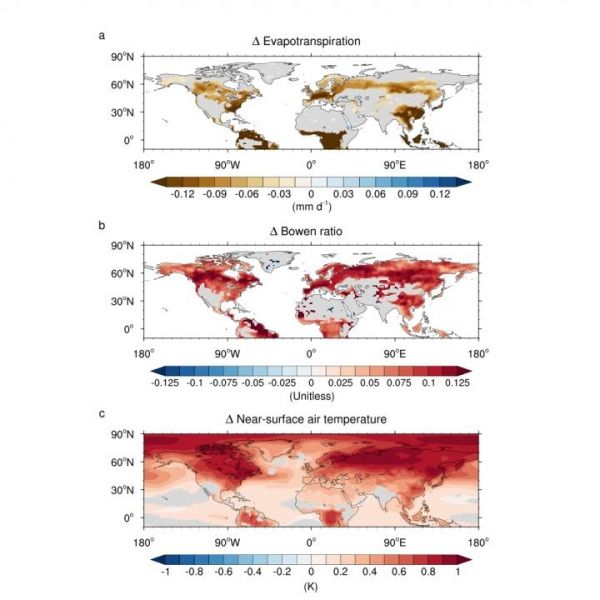The vapor that plants emit when they breathe serves to lower the land surface temperature, much like watering the yard on a hot day. Until now, the greenhouse effect has been blamed for the rise in global temperature. But an interesting study has shown that the Arctic temperature rises when the moisture released by plants is reduced due to the increase of carbon dioxide (CO2 ) in the atmosphere.
The joint research team led by Professor Jong-Seong Kug and doctoral candidate So Won Park of POSTECH’s Division of Environmental Science and Engineering, and Researcher Jin-Soo Kim of the University of Zurich has confirmed that the increase in atmospheric CO2 concentration closes the pores (stomata) of plants in high-latitude areas and reduces their transpiration, which ultimately accelerates Arctic warming. The findings, which were studied through the Earth system models (ESM) simulations, were recently published in Nature Communications, an authoritative journal in science.
Plants take in CO2 and emit oxygen through photosynthesis. During this process, the stomata of leaves open to absorb CO2 in the air and release moisture at the same time.
However, when the CO2 concentration rises, plants can absorb enough CO2 without opening their stomata widely. If the stomata open narrowly, the amount of water vapor released also decreases. When this transpiration of plants declines, the land temperature rapidly rises under greenhouse warming. Recently, such a decrease in transpiration has been cited as one of the reasons for the surge in heat waves in the northern hemisphere.
Read more at Pohang University of Science & Technology (POSTECH)
Image: The impact of stomatal closure on air temperature when CO2 level rises. Not only does the temperature of the continents rise, but the temperature in the Arctic region increases significantly where no vegetation exists (Credit: Jong-Seong Kug (POSTECH))


